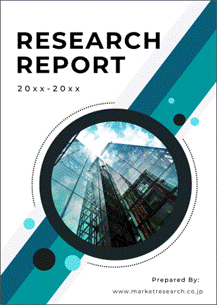 | • レポートコード:D0-MOR-AP1020 • 出版社/出版日:Mordor Intelligence / 2020年3月 • レポート形態:英文、PDF、120ページ • 納品方法:Eメール(受注後2-3営業日) • 産業分類:化学品および材料 |
| Single User | ¥629,000 (USD4,250) | ▷ お問い合わせ |
| Team User | ¥703,000 (USD4,750) | ▷ お問い合わせ |
| Corporate License | ¥1,110,000 (USD7,500) | ▷ お問い合わせ |
• お支払方法:銀行振込(納品後、ご請求書送付)
レポート概要
| 本調査レポートは、炭化ケイ素繊維の世界市場について調査・分析した資料で、炭化ケイ素繊維の市場概要、動向、セグメント別市場規模、地域別分析、競争状況、企業情報、市場機会分析などで構成されています。 |
The market for silicon carbide fiber is expected to grow at a CAGR of over 8% during the forecast period. The major factors driving the growth of the market are rapidly increasing demand from the aerospace industry and growing demand from the energy & power sector. On the flip side, the high cost of silicon carbide fibers is hindering the growth of the market.
– The Aerospace & Defense segment is expected to dominate the market over the forecast period owing to the increasing applications of silicon carbide fibers in the manufacturing of advanced aircraft and defense mechanisms.
– North America is currently estimated to own the largest share of the market studied on account of the humungous aerospace business in the region.
Key Market Trends
Broad Demand from Aerospace Industry
– Today silicon carbide fibers are mainly used in the aerospace industry can be attributed to the advanced properties possessed by it when compared to traditional materials, including increased strength and heat and corrosion resistance.
– It also brings economic and environmental benefits to airline customers by significantly reducing weight, increasing durability and improving fuel efficiency of engines.
– It is currently estimated that aircrafts business around the globe are anticipated to create a consolidated income of around USD 872 billion in 2020.
– In 2019, Airbus became the world’s largest revenue-generating company in the aerospace industry with USD 78.71 billion edging out rivals Boeing, the world’s second-largest company that generated revenue of USD 76.6 billion in 2019.
– All the aforementioned factors are expected to drive the silicon carbide fiber market during the estimated timeframe.
North America Region to Dominate the Market
– North America region holds a prominent share in the silicon carbide fiber market globally as a result of the presence of main aircraft manufacturing nations like the United States and Canada.
– Revenue amassed by the United States alone in 2019 from the manufacturing of aerospace products and parts was about USD 251.24 billion and is determined to reach USD 262.42 billion by 2024.
– Moreover, in the aviation segment, the United States and Canada are the significant income-generating nations from the North America region, computing a total of USD 432.4 billion amongst them, which is roughly 60% of the global aviation industry revenue.
– Thus, rising interest from various enterprises is predicted to drive the market studied in the region during the forecast period.
Competitive Landscape
The silicon carbide fiber market is partially concentrated. Some of the players in the market include UBE INDUSTRIES, LTD, NGS Advanced Fibers Co., Ltd., Nippon Carbon Co. Ltd., Matech, and Haydale Graphene Industries plc.
Reasons to Purchase this report:
– The market estimate (ME) sheet in Excel format
– 3 months of analyst support
1 INTRODUCTION
1.1 Study Assumptions
1.2 Scope of the Study
2 RESEARCH METHODOLOGY
3 EXECUTIVE SUMMARY
4 MARKET DYNAMICS
4.1 Drivers
4.1.1 Rapidly Increasing Demand from Aerospace Industry
4.1.2 Growing Demand from Energy & Power Sector
4.2 Restraints
4.2.1 High Cost of Silicon Carbide Fibers
4.2.2 Other Restraints
4.3 Industry Value Chain Analysis
4.4 Porters Five Forces Analysis
4.4.1 Threat of New Entrants
4.4.2 Bargaining Power of Buyers
4.4.3 Bargaining Power of Suppliers
4.4.4 Threat of Substitute Products
4.4.5 Degree of Competition
5 MARKET SEGMENTATION
5.1 Fiber Type
5.1.1 Continuous Fibers
5.1.2 Short Fibers
5.2 End-user Industry
5.2.1 Aerospace & Defense
5.2.2 Energy & Power
5.2.3 Industrial
5.2.4 Others
5.3 Geography
5.3.1 Asia-Pacific
5.3.1.1 China
5.3.1.2 India
5.3.1.3 Japan
5.3.1.4 South Korea
5.3.1.5 Rest of Asia-Pacific
5.3.2 North America
5.3.2.1 United States
5.3.2.2 Canada
5.3.2.3 Mexico
5.3.3 Europe
5.3.3.1 Germany
5.3.3.2 United Kingdom
5.3.3.3 France
5.3.3.4 Italy
5.3.3.5 Rest of Europe
5.3.4 South America
5.3.4.1 Brazil
5.3.4.2 Argentina
5.3.4.3 Rest of South America
5.3.5 Middle-East and Africa
5.3.5.1 Saudi Arabia
5.3.5.2 South Africa
5.3.5.3 Rest of Middle-East and Africa
6 COMPETITIVE LANDSCAPE
6.1 Mergers and Acquisitions, Joint Ventures, Collaborations, and Agreements
6.2 Market Share/Ranking Analysis**
6.3 Strategies Adopted by Leading Players
6.4 Company Profiles
6.4.1 BJS Ceramics GmbH
6.4.2 COI Ceramics, Inc
6.4.3 GE Aviation
6.4.4 Haydale Graphene Industries plc
6.4.5 Matech
6.4.6 NGS Advanced Fibers Co., Ltd.
6.4.7 Nippon Carbon Co. Ltd.
6.4.8 SPECIALTY MATERIALS, INC.
6.4.9 Suzhou Saifei Group Ltd.
6.4.10 UBE INDUSTRIES,LTD
7 MARKET OPPORTUNITIES AND FUTURE TRENDS